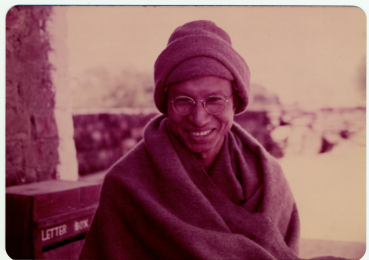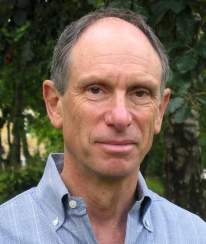Mahasi Sayadaw
The Venerable Mahasi Sayadaw (1904-1982) had a significant impact on the teaching of Vipassana (Insight) meditation in the West and throughout Asia. He is profoundly revered by countless grateful disciples in Burma and abroad and helped many thousands onto the Path of Enlightenment .
His international reputation attracted numerous meditators from abroad. Particular mention should be made of Anagarika Shri Munindra of Bodh Gaya in India, who became a close disciple of Mahasi Sayadaw, spending several years with the Sayadaw studying the Buddhist scriptures and practising Vipassana.
Upon his return to India in 1966, Munindra-ji lived as a layman and then started teaching Vipassana (Insight Meditation) and Abhidhamma (Buddhist psychology) at the Burmese monastery in Bodh Gaya. Many of the Western Vipassana teachers practicing today have been influenced, either directly or indirectly, by Anagarika Munindra’s timeless and lucid teaching. He has had a tremendous impact on the transmission of mindfulness meditation to the West.

Development of Meditation
A commom term in Theravada Buddhism for meditation is bhavana. It means literally ‘more-becoming’, and a modern term for that is development. There are two basic ways of meditative development in Buddhism: Samatha bhavana and Vipassana bhavana.
It concerns the development of the two sections of The Noble Eightfold Path that on the one side implies concentration (Samadhi), and on the other hand intuitive wisdom (Panna).The third section, as the precondition for development of concentration as well as of intuitive wisdom, is morality (Sila).
Development of Calm ( Samatha)
Samatha means ‘ calm’ and and includes all the specific concentration developing meditations. In these meditations the development of concentration is based on the same formular: The focussing of attention develops through the repetition of awareness on a selected object, for instance on the breath, to the exclusion of awareness of everything else for long periods at the time. Whenever a thought or any other object derail the attention, the mind refocusses on the breath. This determined absorption of the mind in one focus is the recipe of the development of mental one-pointedness (ekagatta), which is a synonym for concentration. Samatha and Vipassana can be developed in a combined approach.
Development of Insight (Vipassana)
Munindra-ji’s way of teaching Vipassana focused from the beginning on what was conducive to insight. He instructed in the method of the socalled ‘ pure Vipassana (suddha vipassana)’ that in the last century was revived by the Burmese Vipassana Master Mahasi Sayadaw and for its pragmatic simplicity is based on the oldest Buddhist tradition. In this approach you start developing concentration by practicing moment by moment mindfulness of any activity, also using the breathing as object, and practicing insight into the impermanence of all phenomena from the first qualifying moment of concentration.
In this way we develop insight into the stream of thoughts, emotions and sensual objects and their interrelatedness (Paticca Samuppada). This development is based on knowledge as direct-experience of the impermanence (anicca) of all phenomena, the potential suffering (dukkha) inherent in phenomena and their ultimate nature of voidness or no-self (anatta). We come to understand the momentary and dependent no-core-self that leads to much suffering when not understood.
And in meditation on loving kindness (Metta) we develop understanding of the spiritual nature of our interrelatedness to all other living beings. We do this by developing the emotion of tender love connected with the methodical expansion of the intention that all living beings may be happy, that they all may be free from suffering and attain Enlightenment and Nirvana.

Anagarika Munindra (1915-2003)
‘Munindra was utterly devoted to Dharma, yet not dogmatic. ‘He always recommended people to investigate, go see other teachers for themselves, read this, and find out that,’ Uffe Damborg notes. ‘His attitude to theory was also relaxed. Although he was a very learned man and had studied the Tipitaka thoroughly – he was an Abhidhamma acariya (an Abhidhamma teacher) as well – he often said, ‘Never mind what the scripture says; never mind what the book says. Try to see for yourself, investigate for yourself.’ His dharma was alive. It was not tradition; it was a lived life’.’ In: Mirka Knaster (2010). Living This Life Fully. Stories and Teachings of Munindra. Foreword by Joseph Goldstein. Shambala, Boston and London.

Like he admonished others to be ‘simple and easy’ thus he himself practiced it to perfection. Although he was a very learned person , educated in the Burmese canonical tradition, his way of teaching was just ‘simple and easy’. Munindra-ji taught the core of the Buddha’s Teaching about insight and awakening in the present moment beyond all theories.
Uffe Damborg said: ” I remember him as a teacher of an immeasureable generosity. By way of his scholarly knowledge, his spiritual wisdom and his presence deeply steeped in mindfulness and lovingkindness
See the video:
In Homage to Anagarika Munindra

Joseph Goldstein (1944 -) studied with Munindra in Bodh Gaya most of the time from 1967 to 1974. In 1976 Joseph co-founded the earliest and one of the largest Vipassana Centers in the U.S.A., the Insight Meditation Society (IMS) in Barre, Massachusetts. Munindra taught there on several occasions. Joseph later studied with a number of both Mahayana and Theravada teachers. He is the author of several books on Buddhism and meditation including ‘One Dharma: The Emerging Western Buddhism ‘ (Preface by the Dalai Lama), and ‘Insight Meditation: The Practice of Freedom‘. Joseph is regarded as one of the most significant and experienced Vipassana teachers in the West today.

Uffe Damborg (1944-) studied with Anagarika Munindra in Bodh Gaya from 1968 to 1975. He also spent some years in meditation monasteries in Sri Lanka and lived with Ven. Naynaponika at the Island Hermitage at Dodanduwa.
Uffe was trained by Munindra-ji to teach Vipassana and Samatha meditation. He studied Buddhist psychology (Abhidhamma) with both Munindra and Nyanaponika.
He is a psychologist and a co-author of a book in Danish on mindful eating awareness ( published in English in 2014). Uffe is leading retreats in Denmark and Sweden. His insight and profound knowlege about vipassana meditation and the Dharma is a great inspiration in his teaching.
At the NLVS Vipassana Retreats it’s always an important point to start out doing the breathing meditation, then the meditation on lovingkindness, and then insight meditation (Vipassana).


You must be logged in to post a comment.